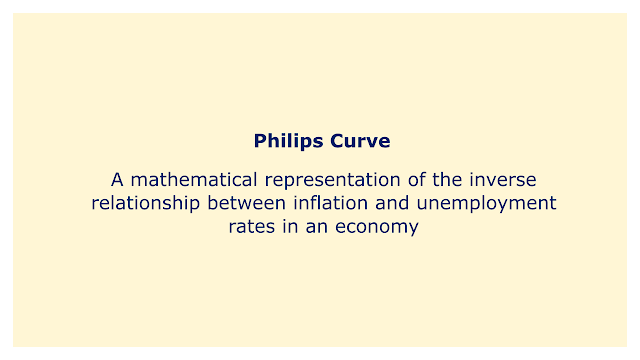 |
| Image: Moneybestpal.com |
The Phillips Curve is a mathematical representation of the inverse relationship between inflation and unemployment rates in an economy. It is named for its inventor, A.W. Phillips, an economist from New Zealand who discovered this link in the 1950s while working in the UK.
The unemployment rate and inflation rate are usually plotted on one axis in a graph to represent the Phillips Curve. The graph slopes rightward and downward, showing a tendency for inflation to rise when unemployment declines and vice versa. According to this relationship, there may be a trade-off between inflation and unemployment, sometimes known as the "Phillips Curve trade-off."
The Phillips Curve is a crucial tool for decision-makers because it shows that they can alter the economy's unemployment or inflation rates through monetary or fiscal policy. For instance, if the unemployment rate is high, authorities would try to stimulate demand by decreasing interest rates or increasing government expenditure, which would likely raise inflation. Instead, if inflation starts to be a concern, authorities may try to slow down the economy by increasing interest rates or reducing government spending, which would typically result in a rise in unemployment.
Changes in inflation expectations, supply shocks, and adjustments to the natural rate of unemployment are just a few of the variables that can impact the Phillips Curve's position and shape. In the years following the stagflation of the 1970s, when high inflation rates lasted while unemployment remained high, the Phillips Curve has also come under fire.
